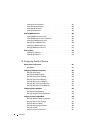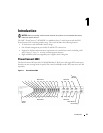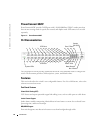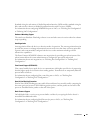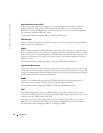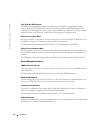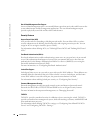
28 Introduction
www.dell.com | support.dell.com
Private VLAN Edge
Private VLAN Edge (PVE) ports are a Layer 2 security feature that provides port-based security
between adjacent ports within a VLAN. It is an extension of the common VLAN. Traffic from
protected ports is sent only to the uplink ports and cannot be sent to other ports within the VLAN.
For information about configuring PVE ports, see "Configuring Ports".
Spanning Tree Protocol Features
Spanning Tree Protocol (STP) per Device
802.1d STP is a standard requirement of Layer 2 switches that allows bridges to automatically
prevent and resolve L2 forwarding loops. Switches exchange configuration messages, using
specifically formatted frames, and selectively enable and disable forwarding on ports.
For information about configuring STP, see "Configuring the Spanning Tree Protocol."
Fast Link
STP can take as long as 30-60 seconds to converge as it detects possible loops and allows time for
status changes to propagate and for relevant devices to respond. This duration is considered too
long for many applications. Fast Link bypasses this delay without requiring multiple data paths for
network resiliency.
For information about enabling Fast Link for ports and LAGs, see "Defining Port Configuration" or
"Defining LAG Configuration."
IEEE 802.1W Rapid Spanning Tree
Rapid Spanning Tree Protocol (RSTP) detects uses network topologies to enable faster
convergence, without creating forwarding loops.
For information about enabling RSTP, see "Defining the Rapid Spanning Tree."
Multiple Spanning Tree
Multiple Spanning Tree (MSTP) operation maps VLANs into ST instances. MSTP provides a
differing load balancing scenario. Packets assigned to various VLANs are transmitted along
different paths within MSTP Regions (MST Regions). Regions are one or more interconnected
MSTP bridges with identical MSTP settings. The standard lets administrators assign VLAN traffic
to unique paths.
For more information about MSTP, see "Defining the Multiple Spanning Tree".



